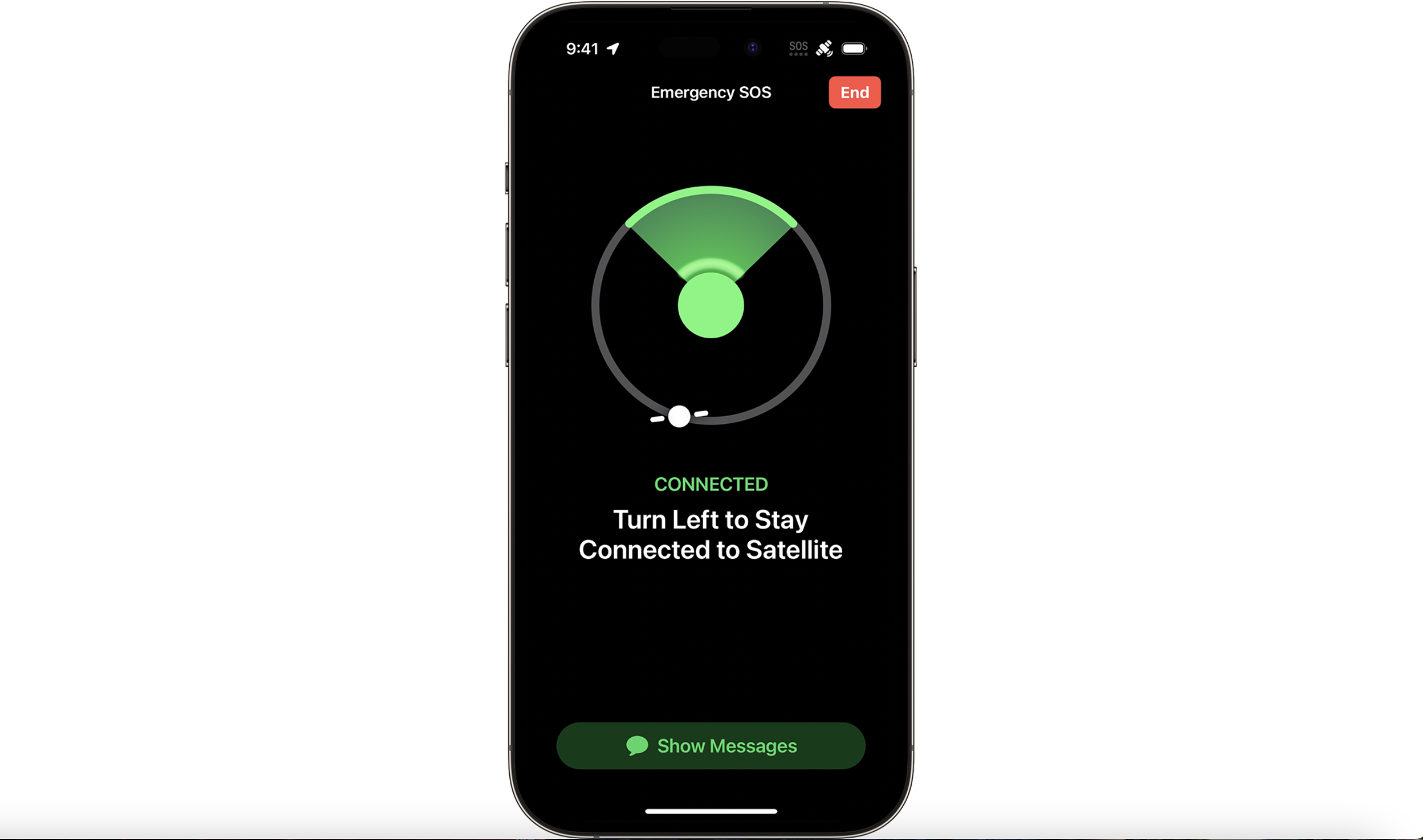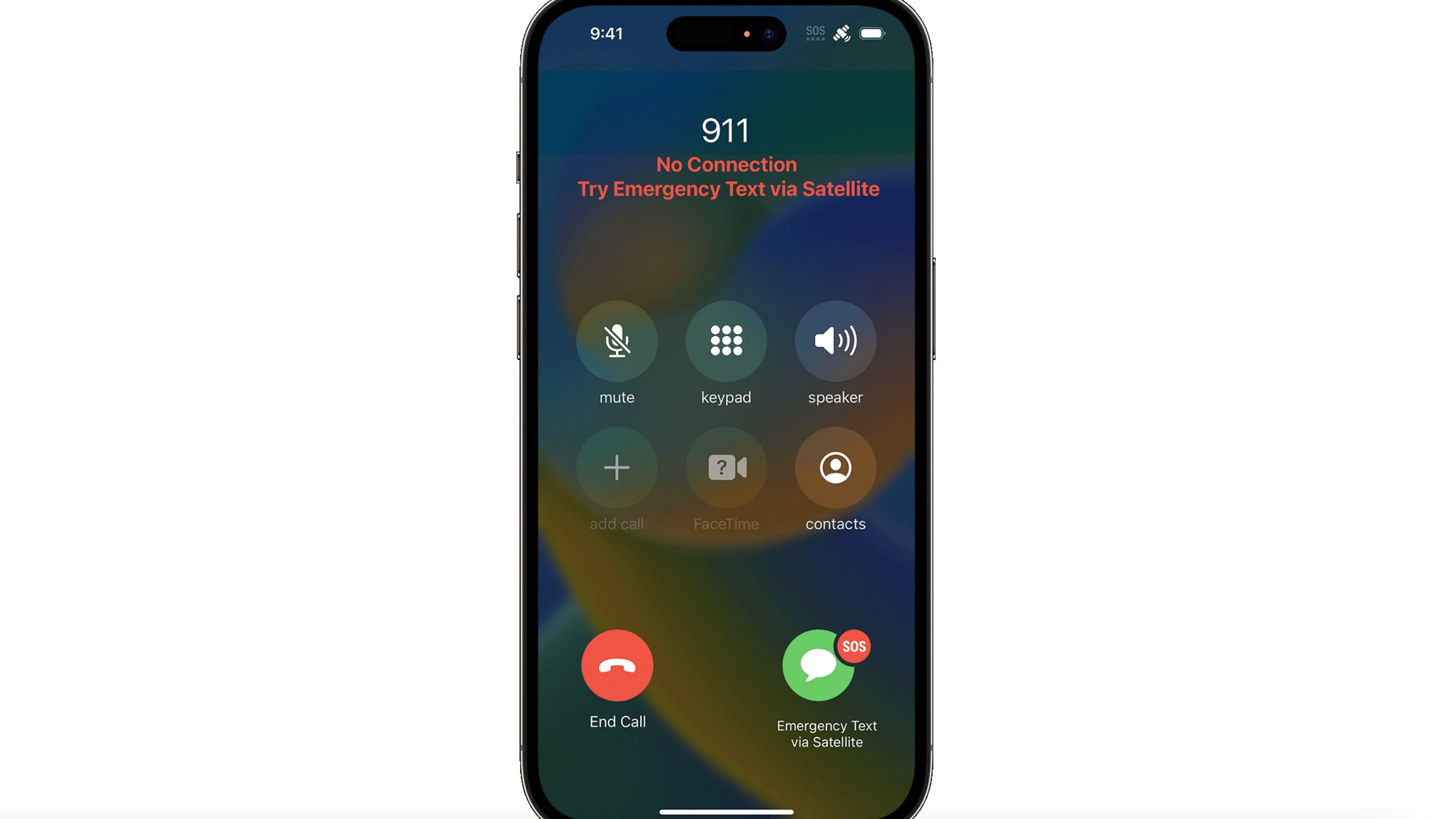What you need to know about the iPhone 14's satellite features
The service could be a genuinely useful addition for outdoor photographers, but it's only available in the US and Canada to start with

Apple has just launched its iPhone 14 lineup of smartphones, and while we're more interested in why the range is good for photographers, it's interesting to uncover all of the new features – including Apple’s Emergency SOS via satellite.
It’s designed to let users of the new flagship iPhone 14 camera phones get hold of emergency services in areas where there is no reception. The system uses satellites to get users to help when there is no Wi-Fi or cellular network available to make a call and is an emergency messaging service only. At the time of the iPhone 14 launch, it is being rolled out to users in the US and Canada only from November, when we will see an iOS 16 update.
For outdoor, action, or extreme photographers who often find themselves in the remotest parts of the world, this could be a useful feature, even though it's not specifically camera-related. It might also see the iPhone 14 models make it onto our guide of the best iPhone for photography.

Using Emergency SOS via satellite
In order to make use of Apple’s new Emergency SOS via satellite feature, you’ll need an iPhone 14, as the service works thanks to a combination of hardware in the new flagship and support in the iOS 16 update coming in November.
Users will need a clear view of the sky and a clear horizon – so there’s nothing blocking the satellite signal. “In ideal conditions with a direct view of the sky and the horizon, a message might take 15 seconds to send, and over a minute to send under trees with light or medium foliage. If you're under heavy foliage or surrounded by other obstructions, you might not be able to connect to a satellite,” states Apple. Handily, the on-screen images will give users an indication of when they’re connected, as well as advise on whether you need to turn left or right to maximize the connection.
The service will only be offered when users have no coverage, so if users try to place an emergency services call and can’t get through due to a lack of coverage, their phone will then offer to send text via satellite.
The service after that is guided by the iPhone 14 and consists of tapping ‘Emergency Text via Satellite’, then ‘Tap Report Emergency’, then answering questions to determine essential details. Next users will choose to notify their emergency contacts, then follow onscreen instructions to connect to a satellite, and lastly simply stay connected to send the message.
Get the Digital Camera World Newsletter
The best camera deals, reviews, product advice, and unmissable photography news, direct to your inbox!
Once connected users will be able to text emergency services to give all the necessary information, including the nature of the emergency, how much phone battery life is available, and of course location. If the emergency service required doesn't accept text messages, it will still reach them, via an Apple service provider.
Emergency SOS via satellite: Rollout
Apple has an agreement with a satellite provider, Globalstar, for Emergency SOS via satellite, which is most probably why the service is only available in the US and Canada at launch. There’s not currently been an announcement as to when coverage might appear in other regions, most probably as it will depend on when Apple can reach commercial agreements with satellite service providers for other geographical locations.
Want to know the latest speculations when it comes to camera phones? Check out our phone rumors hub, which is updated regularly as new intel comes in. These are the best camera phones and best budget camera phones if you're on the lookout for a new device.
Rachael is a British journalist with 18 years experience in the publishing industry. Since working on www.digitalcameraworld.com, she’s been freelancing, and contributing to some of the world’s best-loved websites and magazines including T3.com and TechRadar.com and has also had a book, iPad for Photographers, published. She's currently acting as editor of 5GRadar.com - a website specializing in the latest cellular technology.

